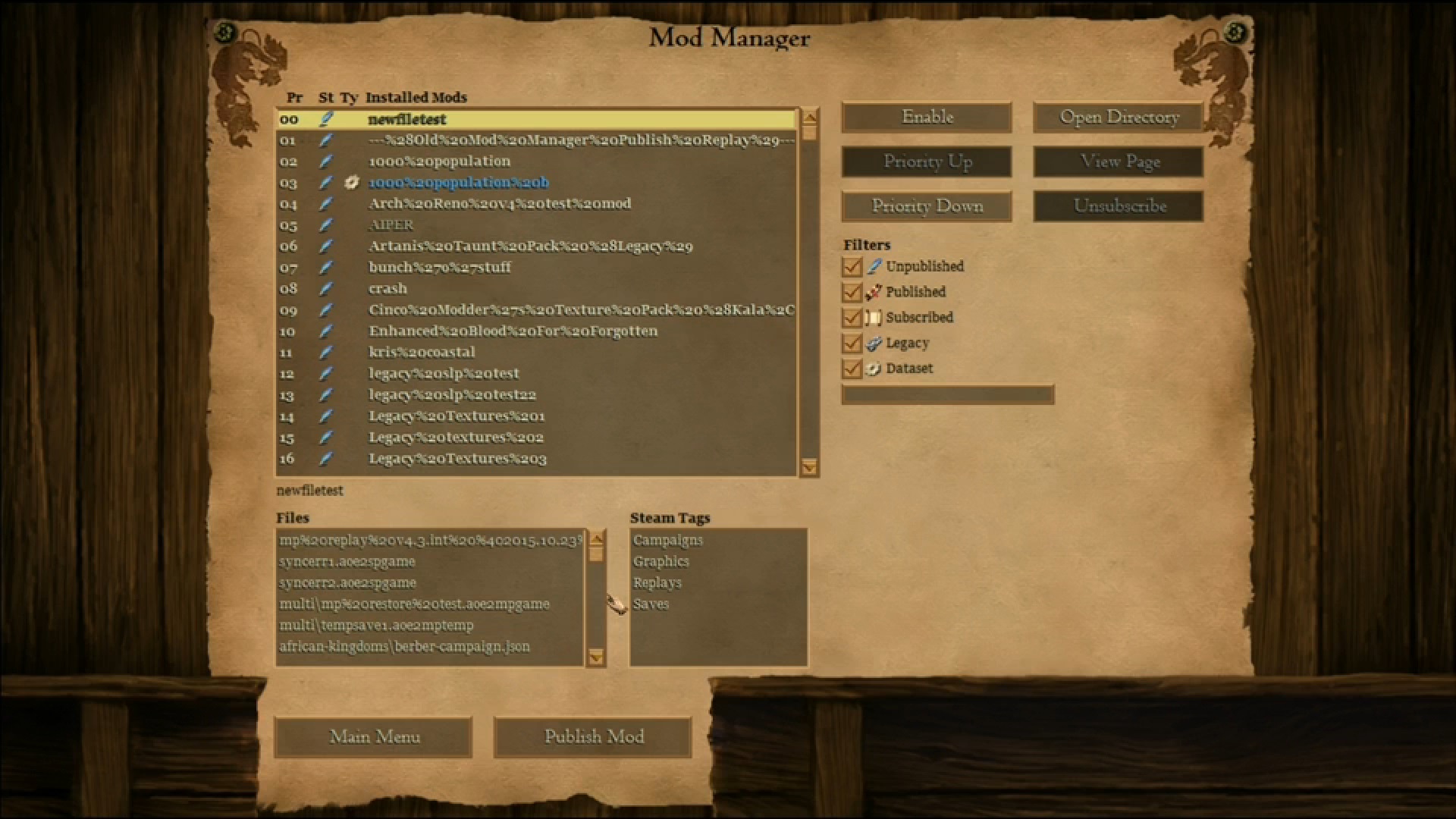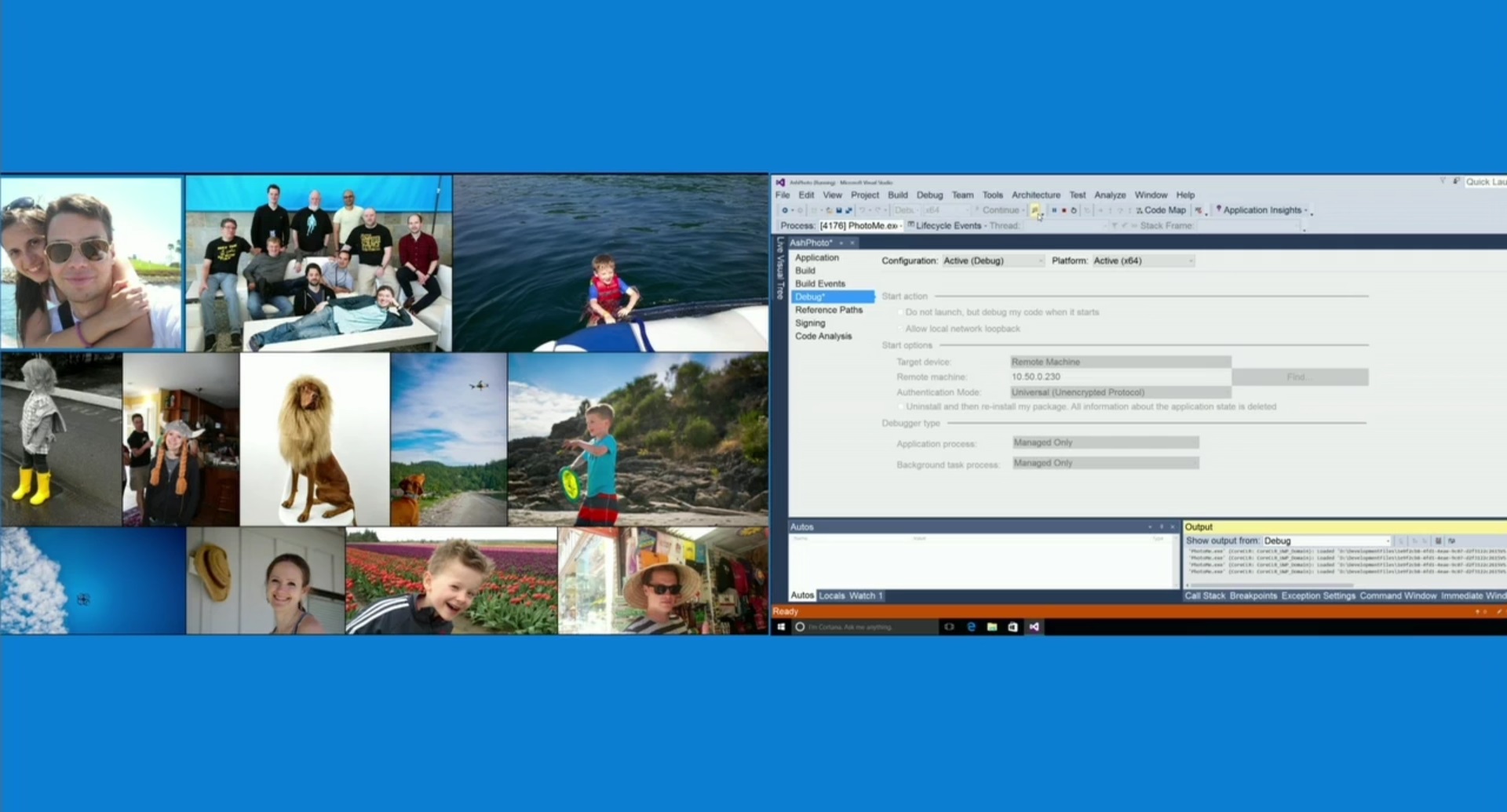Microsoft Transforms Retail Xbox One Into A Dev Kit, Adding Mods And Overlay To Windows 10 Gaming (Updated)
Update, 5/10/2016, 7:55am PT: Starting today, UWP games will support FreeSync and G-Sync technologies. More importantly, Microsoft also unlocked framerates for its UWP games and apps.
Since January 2015, Microsoft pushed for Xbox integration with Windows 10, and in the following months after the launch of the new OS, we've seen various examples of the marriage of Microsoft's console and PC. This includes the ideas of cross-buy and cross-play titles, the Xbox app on PC, Game DVR and in-game streaming. We also heard about the company's PC gaming plans, specifically with the use of the Universal Windows Platform (UWP) to create games on the Windows Store. At this year's Microsoft Build keynote, the company revealed more details on its two gaming platforms.
Improving PC Gaming
Xbox head, Phil Spencer, initially talked about the UWP, which is the company's foundation to bring games onto the PC as Universal Windows Apps (UWA). One major example of a game using UWP is Forza Motorsport 6: Apex, which we saw at the Xbox Spring Showcase. The free PC-exclusive game was the Turn 10 Studios' first step into PC gaming, and the development team plans to ship future Forza games on both the Xbox and PC. Other games include Gears of War: Ultimate Edition, the recently launched season 3 of Killer Instinct and the upcoming Quantum Break.
The use of UWP is crucial to developers, but according to Spencer, a UWP-based game can also benefit gamers.
"Through the use of the Universal Windows Platform, our plan is to deliver games that will run better on Windows, with more predictable performance, more robust install, uninstall and servicing capability through a modern application platform, greater safety for users through a protected runtime environment, and distribution of modern desktop applications on any store, including the Windows store, and via any deployment mechanism," Spencer said during his presentation.
However, he also noted that the company is listening to the feedback from PC gamers and adding more features to Windows 10. In May, players will be able to disable VSync, and Microsoft is also adding support for GSync and FreeSync technologies for its UWA games. The company is also working on better performance on full-screen titles as well as a brand new set of features, such as an overlay system and mod support.
Love For Win32
Even with various API advancements, some developers still use the classic Win32 coding language to build games. With Windows 10, these games will work on modern desktops, thanks to Microsoft's desktop app converter. Spencer used the HD edition of Age of Empires II to demo the new feature. Specifically, he used the Steam version of the game to show the number of people playing the game at that moment. By running the game through the converter app, you can still have the same experience as if you played the game through Steam. Various mods through the Steam Workshop are available for use through the converter as well, and you can still compete in multiplayer matches.
Get Tom's Hardware's best news and in-depth reviews, straight to your inbox.
Spencer also showed the same conversion process with a more recent title: CD Projekt Red's The Witcher 3: Wild Hunt. After a few seconds, the game started and quickly loaded a save point. Even though The Witcher 3 on the UWP was just an experiment, Spencer wanted to show that the conversion feature could quickly work on any game on the PC.
"This allows these games to take advantage of the common services and technology in both Xbox and Windows 10. Things like platform-specific features like live tile support and notifications," he said. "We have consistent input support with controller and mouse and keyboard across all of our devices. And distribution in the Windows Store or any other store."
Turning Your Xbox One Into A Dev Kit
As Microsoft Build is, first and foremost, a developer-centric conference, Spencer switched to the Xbox One and how any retail copy of the device can be transformed to a dev kit, which he called "Xbox Dev Mode."
Partner software engineering manager, Ashley Speicher, activated the feature by running the Dev Mode Activation app on the console. Once the console is registered as a "dev console" with a Dev Center account, developers can press a button on the Xbox controller to immediately restart the console in developer mode.
By linking apps, such as Microsoft Visual Studio, to the Xbox, developers can launch various builds of their apps straight to the console. Most of the "heavy lifting," according to Speicher, is done through the UWP, which also allows developers to use the Xbox controllers on the console or PC to navigate through the app as well, integrating other features such as speech recognition to any app.
Dev Mode also includes another app on the Xbox One called Dev Home, which includes various developer settings, account management and the ability to return the Xbox One back to its original retail version. As a final bonus, a Preview version of Dev Mode is available today.
The Anniversary Update
When the Windows 10 anniversary update comes out this summer, Spencer and the Xbox team will also include their own updates for the console and PC. At the top of the list is a "single, unified store" throughout all Windows devices. Spencer said that this will help developers easily create packages for their games for scenarios such as season passes and pre-order sales.
Windows 10 introduced Cortana to the PC and mobile platforms, but now it's also coming to the Xbox One so you can use the virtual assistant to help you find new games to play. Finally, the Xbox team will also start laying the groundwork for some heavily-requested features from users, one of which was the ability to have background music available while playing a game.
Tip Of The Iceberg
Obviously, there's more news to come during E3 later this year, but this is just a taste of what's to come from Microsoft's gaming division. As expected, most of these features were targeted towards developers, but Xbox fans could also benefit when creators use these new tools to create new games on the Xbox One and PC.
Follow Rexly Peñaflorida II @Heirdeux. Follow us @tomshardware, on Facebook and on Google+.
Rexly Peñaflorida is a freelance writer for Tom's Hardware covering topics such as computer hardware, video games, and general technology news.
-
jasonelmore Microsoft doing what it does best, software. Kudos to the Retail Xbox one unit being able to be a dev kit... This will open up a lot of opportunities for small indie developers.Reply -
amk-aka-Phantom I don't trust any of this nonsense for a second. All sane gamers, please boycott this Windows Store (UWP/UWA/whatever) nonsense harder than you hate on Ubisoft and EA, we don't need to enable THIS sort of competition for Steam in any way. They don't offer a superior experience or better/more products, they just want to make it harder for us to game the way WE want. Leave that to consoles.Reply -
RewCore ReplyI don't trust any of this nonsense for a second. All sane gamers, please boycott this Windows Store (UWP/UWA/whatever) nonsense harder than you hate on Ubisoft and EA, we don't need to enable THIS sort of competition for Steam in any way. They don't offer a superior experience or better/more products, they just want to make it harder for us to game the way WE want. Leave that to consoles.
A little competition can't hurt anyone. -
xHDx ReplyI don't trust any of this nonsense for a second. All sane gamers, please boycott this Windows Store (UWP/UWA/whatever) nonsense harder than you hate on Ubisoft and EA, we don't need to enable THIS sort of competition for Steam in any way. They don't offer a superior experience or better/more products, they just want to make it harder for us to game the way WE want. Leave that to consoles.
There's always one... You're probably part of the group of people that boycott Windows 10 because it was new and just complain for something to do.
Steam isn't great. It does nothing as an actual game platform that really effects the performance of games. Have you even played any games on the UWP. Your view are skewed and lack any substance. Theres nothing to say we can't use Steam and UWA at the same time. We get the performance boost of UWP and the social connection of Steam.
-
Quixit Xbox 360 supported a dev mode too, I think it only supported XNA but it's not a big leap for the Xbox One to support something similar.Reply -
jimmysmitty http://www.theverge.com/2016/3/30/11331014/microsoft-windows-linux-ubuntu-bashReply
I think that is pretty damn big. -
jimmysmitty Reply17741407 said:I don't trust any of this nonsense for a second. All sane gamers, please boycott this Windows Store (UWP/UWA/whatever) nonsense harder than you hate on Ubisoft and EA, we don't need to enable THIS sort of competition for Steam in any way. They don't offer a superior experience or better/more products, they just want to make it harder for us to game the way WE want. Leave that to consoles.
There's always one... You're probably part of the group of people that boycott Windows 10 because it was new and just complain for something to do.
Steam isn't great. It does nothing as an actual game platform that really effects the performance of games. Have you even played any games on the UWP. Your view are skewed and lack any substance. Theres nothing to say we can't use Steam and UWA at the same time. We get the performance boost of UWP and the social connection of Steam.
I agree but I also disagree, Steam was the first digital distribution platform that made getting updates for your games easy and allowed developers to easily connect with their customers. It has given a lot more power to gamers.
It is a double edge sword however in that it has also allowed for the bad in gamers to come out. Most of the forums is a mess of hate and anger instead of it being an easy way for gamers to unite and talk. I feel bad for games in Early Access as people expect to pay less for them even though they will get a full copy on release along with alpha/beta access for the game.
Steam is a pretty big thing and so far no one has matched them. Windows could but I don't think Microsoft is trying to do that. In fat they actually said their idea can still be used on Steam, a game for example can still be part of the UWP and be on Steam or even GoG. The idea is just that it is universal across Windows devices. -
wifiburger I don't care about your DEV kits or your Windows Apps !Reply
I just care about my xbox games working and have 0 respect for your brand ;
the faster I start my game the faster I forget about that slow ugly dashboard and the name Microsoft !


